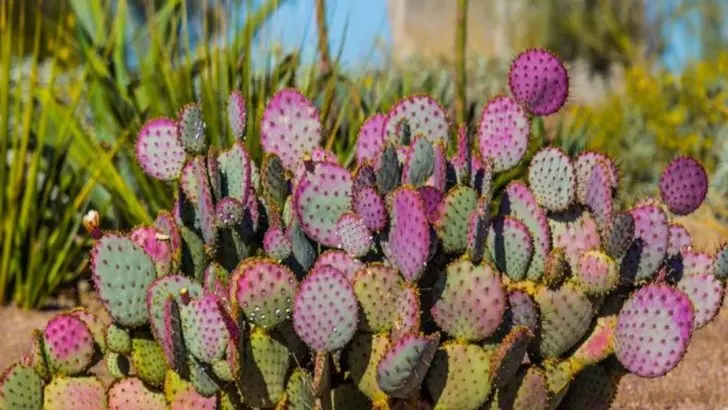ou might think you need a hot, arid climate to enjoy the sculptural beauty of Southwestern plants—but think again. With their bold forms, dusty hues, and architectural presence, these plants bring undeniable desert drama. Yet surprisingly, many of them can thrive in the Northeast, where the seasons are sharper, the rainfall is heavier, and the winters actually arrive.
The secret? Selecting hardy varieties that mimic the look and feel of desert flora—but are built to handle frost, snow, and soil that doesn’t drain in a flash. Think of it as desert style without desert conditions. From yucca-like spikes that pierce through the snow to silvery foliage that glows against fall colors, these plants deliver serious Southwest vibes with a Northeast work ethic.
Yucca Filamentosa

Yucca Filamentosa, known for its striking sword-like green leaves and towering flower stalks, seems more at home in a desert scene than a Northeastern backyard. Yet, this perennial thrives in colder climates, shrugging off snow and frost with ease. Plant it in well-drained soil, and watch as it brings a touch of the exotic Southwest to your garden. Its ability to withstand harsh winters makes it a favorite among gardeners looking to add a bold architectural element to their outdoor spaces.
Prickly Pear Cactus
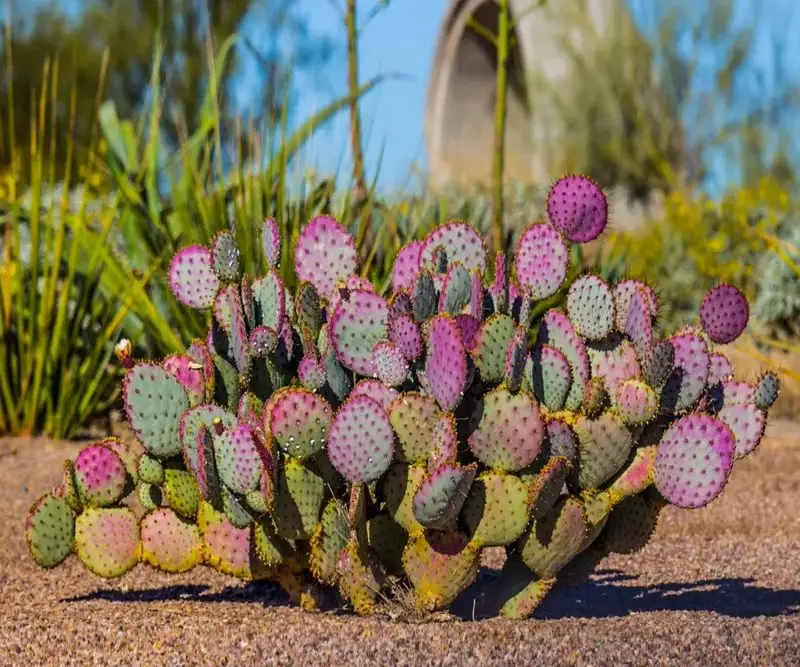
With its paddle-shaped pads and vibrant yellow flowers, the Prickly Pear Cactus might seem like a desert exclusive. Surprisingly, it handles the Northeast’s cold with aplomb. Its resilience is matched by its unique aesthetic, which adds both color and texture to your garden. Plant it in a sunny spot with well-drained soil to enjoy its whimsical charm year-round. Moreover, its edible fruit, often used in jellies and candies, introduces a culinary twist to its visual appeal.
Agave Americana
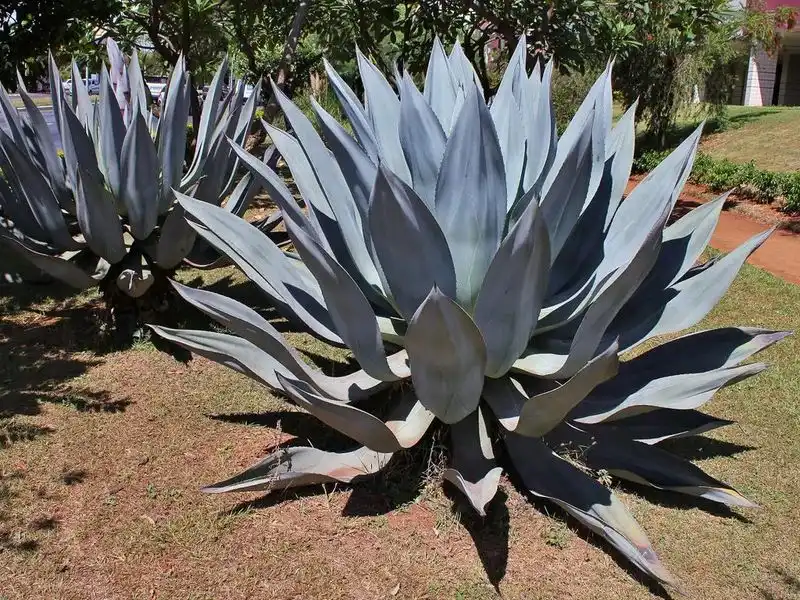
The regal Agave Americana, with its dramatic blue-green rosettes, transforms any garden into a landscape reminiscent of the Southwest. Surprisingly, this plant can tolerate the Northeast’s chill when provided some winter protection. Its towering presence and sculptural quality make it a conversation starter. Perfect for rock gardens, Agave Americana thrives in well-draining soil and full sun. With minimal care, it promises to stand as a robust centerpiece, offering a taste of desert grandeur without the heat.
Russian Sage
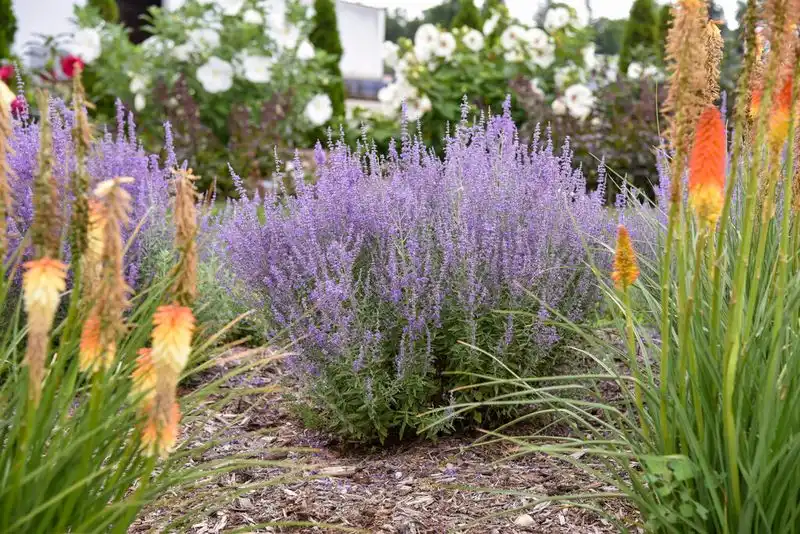
Russian Sage, with its silvery foliage and lavender-blue flowers, evokes images of wide-open spaces and sun-baked terrains. However, it flourishes in the Northeast’s varied climate, bringing a sense of wild beauty to gardens. Renowned for its drought resistance and long blooming season, this plant attracts pollinators while requiring little maintenance. Plant it in a sunny spot to enjoy its aromatic leaves and vibrant blooms. Its presence weaves a tapestry of color and texture, reminiscent of a sunlit prairie.
Sedum ‘Autumn Joy’
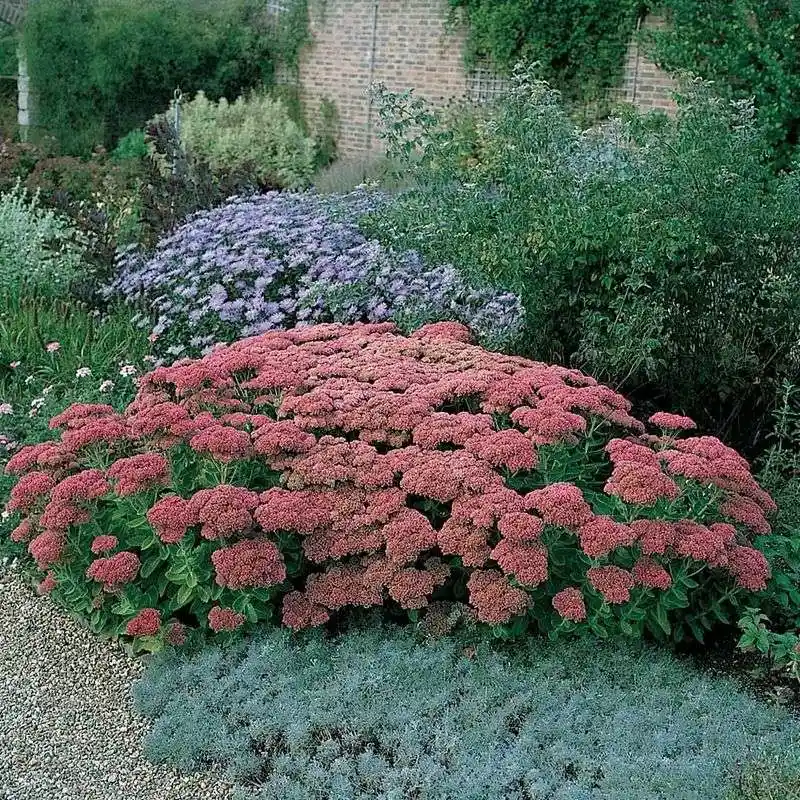
Sedum ‘Autumn Joy’, with its fleshy leaves and clusters of pinkish blooms, brings a touch of the exotic to your Northeast landscape. Known for its toughness, this plant thrives in poor soils and withstands drought, making it a standout in any garden. As autumn approaches, its flowers deepen to a rich burgundy, providing a vibrant contrast to fall foliage. Place it in a sunny, well-drained spot for an easy-care addition that offers year-round interest.
Mexican Feather Grass
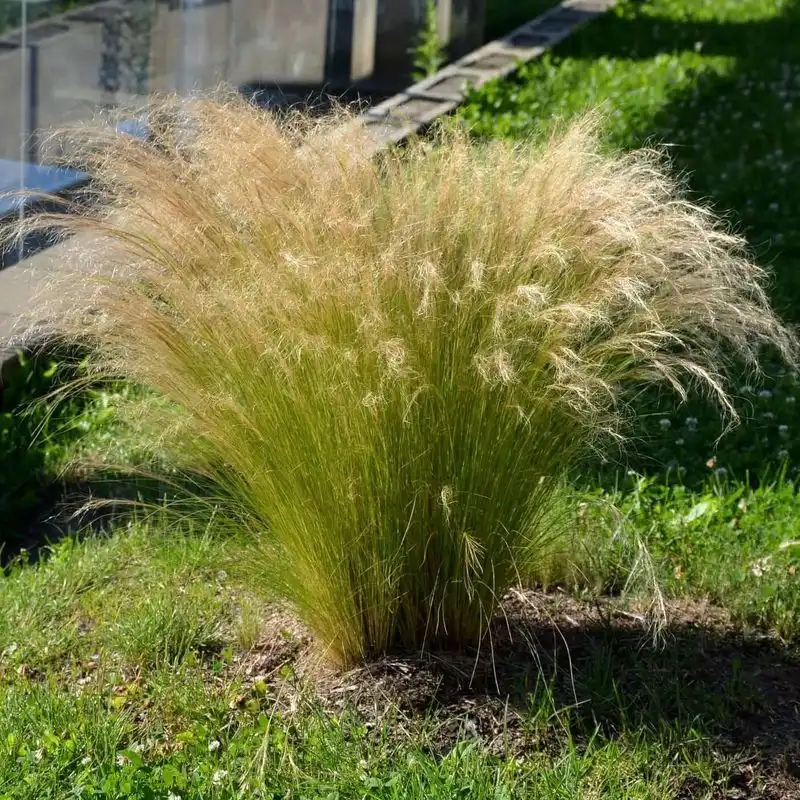
Delicate yet resilient, Mexican Feather Grass adds a soft, flowing texture to any garden. Its fine green blades turn golden as the seasons change, creating a dynamic visual interest. Often associated with desert landscapes, this grass thrives in the Northeast’s varied climate. Perfect for borders or mass plantings, it requires minimal maintenance and is an excellent choice for adding movement to garden designs. Its subtle beauty is appreciated throughout the year, enhancing both formal and casual landscapes.
Blue Fescue

Blue Fescue, with its cool blue tufts, brings a refreshing contrast to the green hues of a Northeast garden. This ornamental grass is not only aesthetically pleasing but also highly adaptable, thriving in both sun and shade. Its compact size makes it perfect for edging or rock gardens. Throughout the year, Blue Fescue maintains its striking color, adding a splash of cool elegance to landscapes. Its ability to withstand drought and cold winters makes it a versatile choice for gardeners seeking year-round appeal.
Red Yucca

Red Yucca, with its elegant arching leaves and coral-red flower spikes, is a standout in any garden setting. Though reminiscent of a desert bloom, it adapts well to the Northeast climate. Its blooms attract hummingbirds and butterflies, adding a lively dynamic to your garden. Plant it in full sun with well-drained soil, and enjoy its long-lasting flowers through the warmer months. Its graceful form and hardiness make it an excellent choice for adding vertical interest and wildlife-friendly features.
Echinacea (Coneflower)
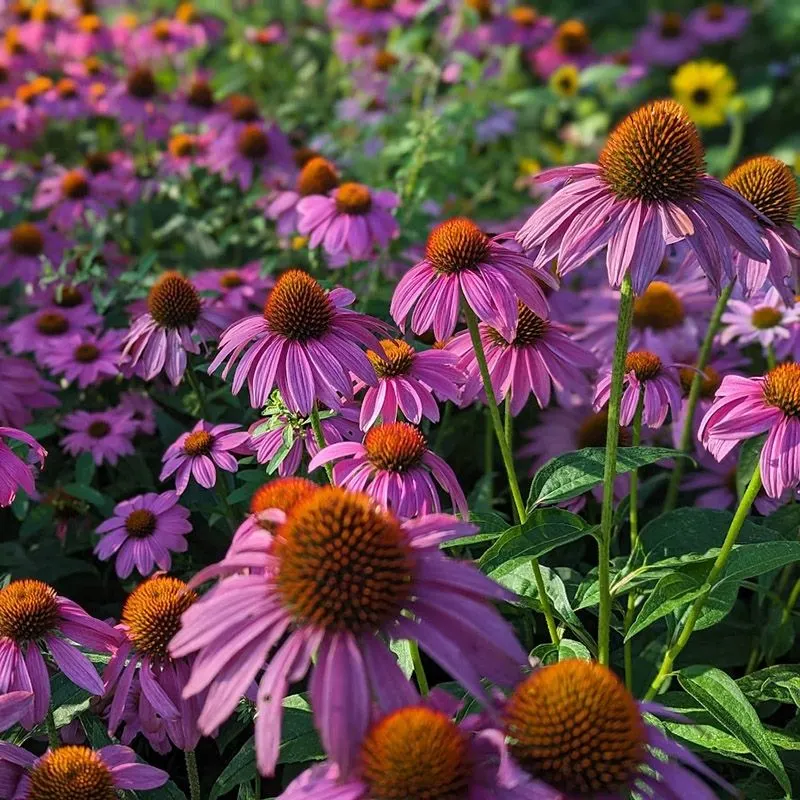
Echinacea, commonly known as Coneflower, stands tall with its vivid petals and spiky centers, capturing attention in any garden. Despite its Southwestern appearance, it thrives in the Northeast, offering resilience against cold weather. Known for its medicinal properties, Echinacea is a favorite among herbalists and gardeners alike. Plant it in full sun to part shade for best results. Its vibrant blooms not only add a splash of color but also attract pollinators, supporting local ecosystems throughout its blooming season.
Purple Fountain Grass
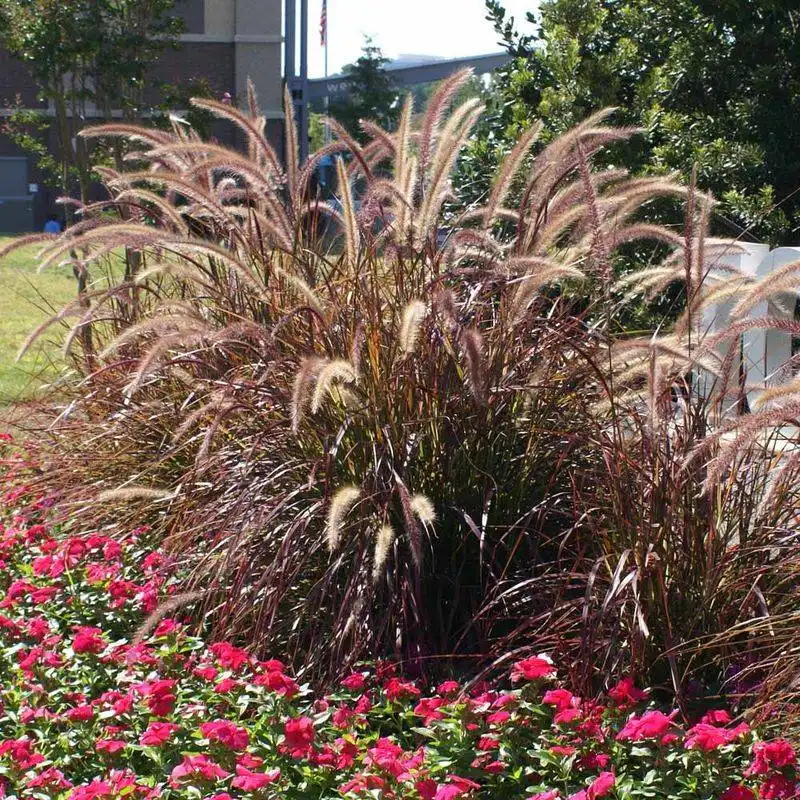
Purple Fountain Grass, with its rich burgundy leaves and arching plumes, introduces a dramatic flair to any landscape. While it conjures images of arid terrains, it thrives in the Northeast’s climate, especially in well-drained soils. Its showy plumes dance gracefully in the wind, adding movement and texture. Ideal for borders and container gardens, this grass provides a striking contrast against lighter foliage. Its low-maintenance nature and adaptability make it a popular choice for adding both color and drama.
Hens and Chicks
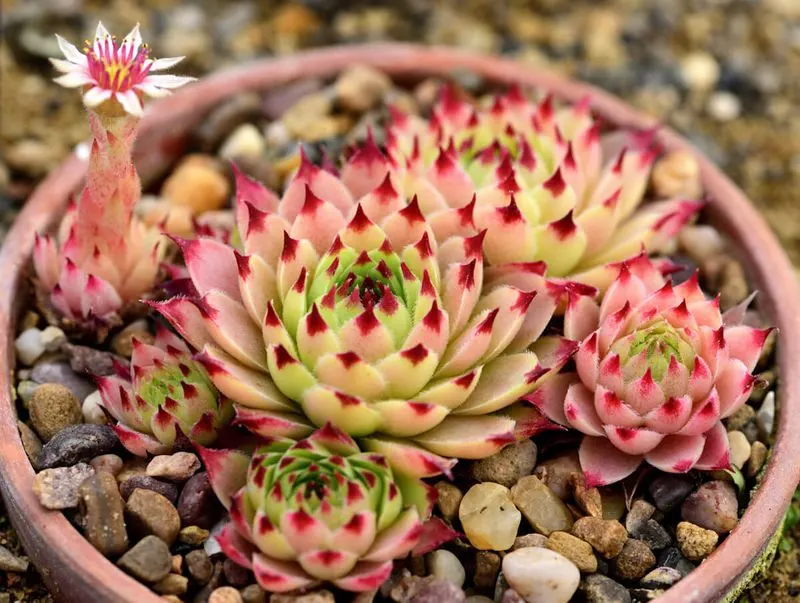
Hens and Chicks, with their charming rosettes, are a delightful addition to any garden. Resembling something from a desert scene, these succulents thrive in the Northeast, even tolerating cold winters. They multiply easily, filling spaces with their offspring, or ‘chicks’. Ideal for rock gardens or as ground cover, they require minimal maintenance. Their unique form and ability to adapt to various conditions make them a gardener’s favorite. Their intriguing appearance adds both texture and a dash of whimsy to outdoor spaces.
Lavender

Lavender, with its soothing fragrance and purple blooms, is often associated with warmer climates, yet it flourishes in the Northeast. Its aromatic foliage is not only pleasing to the senses but also deters pests. Lavender thrives in sunny spots with well-drained soil, offering blooms that attract bees and butterflies. Its calming presence and vibrant color make it an ideal choice for borders, walkways, or container gardens. Lavender’s versatility and charm make it a beloved plant for both novice and seasoned gardeners.
Hardy Ice Plant
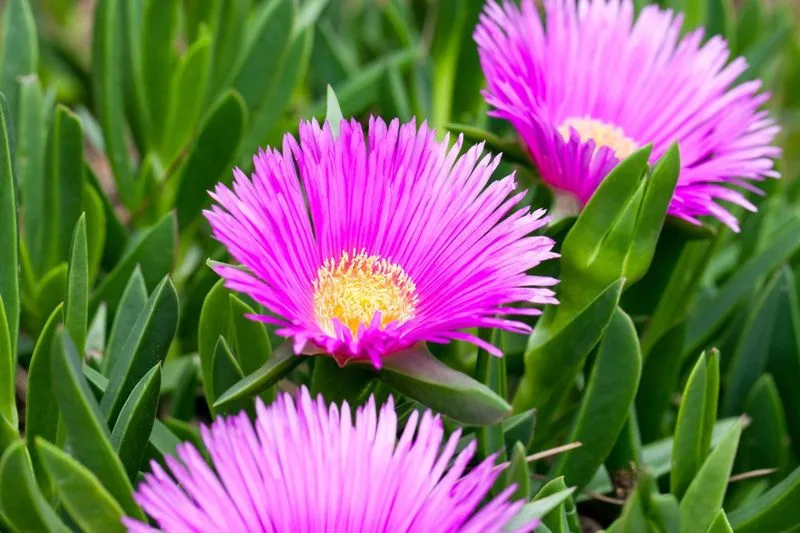
The Hardy Ice Plant is a burst of color with its bright pink flowers and succulent leaves. Often seen in dry, rocky terrains, this plant is surprisingly hardy, enduring Northeast winters with grace. Its low-growing habit makes it perfect for rock gardens or as a ground cover. Hardy Ice Plant requires minimal care, thriving in sunny, well-drained areas. Its dazzling blooms attract butterflies, adding life and vibrancy. This plant not only adds color but also brings a unique texture, enhancing garden diversity.
Sagebrush
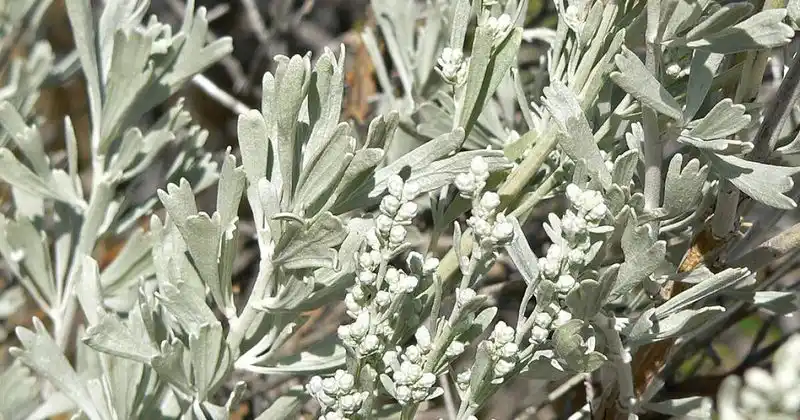
Sagebrush, with its silvery-green leaves, evokes images of expansive desert landscapes. Surprisingly, it adapts well to the Northeast climate, providing a distinct texture and aroma to gardens. Known for its drought tolerance, Sagebrush thrives in sunny, well-drained locations. Its understated beauty and fragrant foliage offer year-round interest, while its resilience makes it a low-maintenance choice. Ideal for borders or naturalized areas, it adds a touch of wild elegance, enhancing garden aesthetics with its unique charm.
Yarrow

Yarrow, with its fern-like leaves and clusters of bright blooms, is a resilient addition to any garden. Though it evokes thoughts of sunbaked landscapes, it performs well in the Northeast. Yarrow’s drought resistance and ability to attract beneficial insects make it a smart choice for eco-conscious gardeners. Plant it in sunny spots to enjoy its long-lasting flowers and easy-care nature. Its adaptability and vibrant color provide a natural, carefree beauty that complements both wild and formal garden designs.
Desert Willow
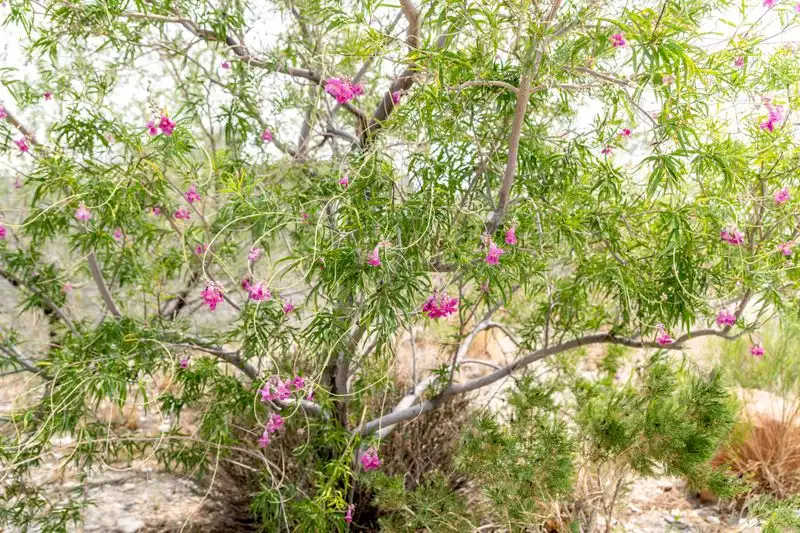
Desert Willow, known for its graceful form and trumpet-shaped flowers, brings a touch of the Southwest to your garden. Surprisingly adaptable, it thrives in the Northeast with proper care. Plant it in well-drained soil and a sunny location to enjoy its seasonal blooms. Its flowers attract hummingbirds and other pollinators, enhancing your garden’s biodiversity. While it conjures images of dry, arid landscapes, its beauty and elegance make it a standout feature in any garden, offering a unique and colorful display.
Golden Barrel Cactus
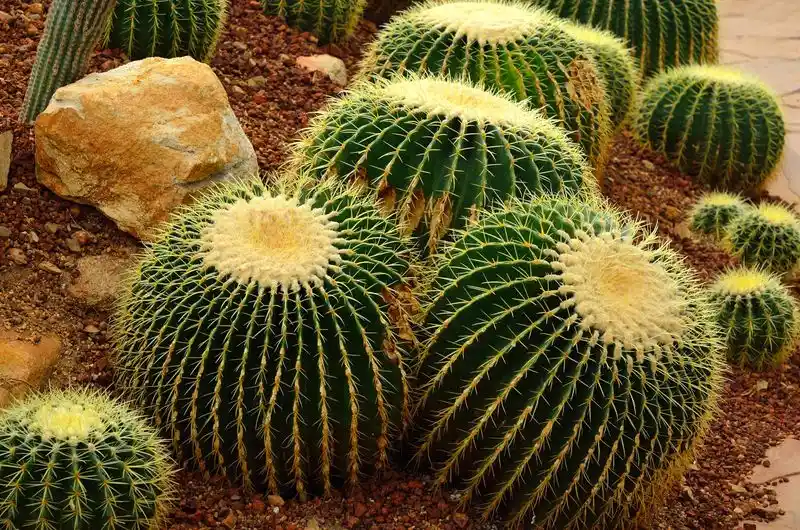
The Golden Barrel Cactus, with its spherical form and striking spines, is a captivating addition to gardens. While it suggests arid desert scenes, this cactus can thrive in Northeast gardens with some winter protection. Its unique shape and low water needs make it ideal for xeriscaping or as a focal point in rock gardens. With proper care, it adds a bold architectural element, providing both texture and intrigue. Its distinctive appearance and adaptability make it a conversation starter in any garden setting.
False Indigo

False Indigo might just be the garden’s secret rockstar. With stunning, pea-like blue flowers, it’s as if the sky decided to blossom. These resilient plants stand tall and proud, offering a burst of color that’s reminiscent of expansive southwestern skies. Often mistaken for a desert dweller, this perennial thrives robustly in the Northeast.
Its deep roots stabilize and enrich the soil, making it not just beautiful but functional. Picture a garden oasis where False Indigo draws in bees and butterflies, adding life and movement. A delight for both the eyes and the ecosystem.
Did you know? These plants were once used as a dye, substituting for the rare true indigo. A historical nod that only adds to their charm.
Mugwort
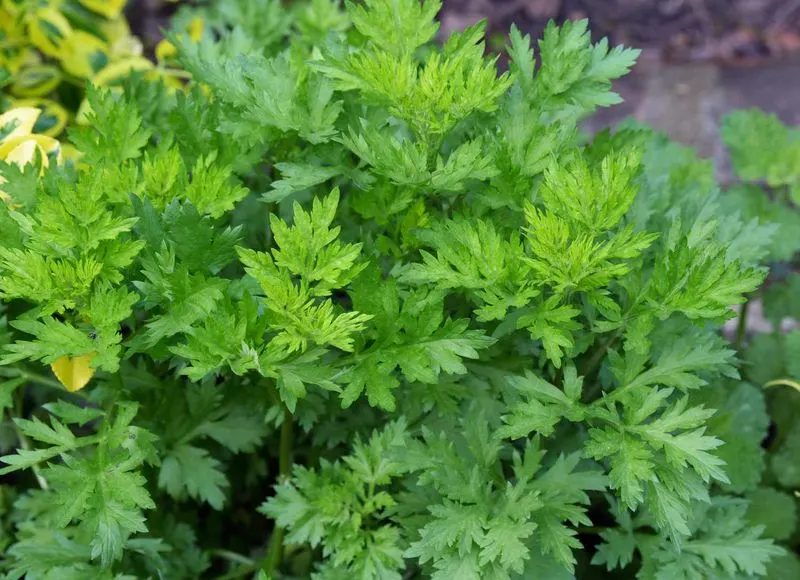
Mugwort, with its aromatic leaves and silvery sheen, whispers tales of ancient herbal lore. Often associated with the mystique of the desert, this hardy plant surprises many by thriving in the Northeast’s diverse conditions. Its adaptability is its superpower, easily taking root in various soils and climates.
This plant is more than a pretty face. Used historically in teas and as a natural remedy, it brings a sense of tradition to modern gardens. Imagine a stroll where the air carries the subtle scent of mugwort, a gentle nod to its rich past.
Fun fact: Mugwort was believed to ward off spirits and was placed under pillows for vivid dreams.

